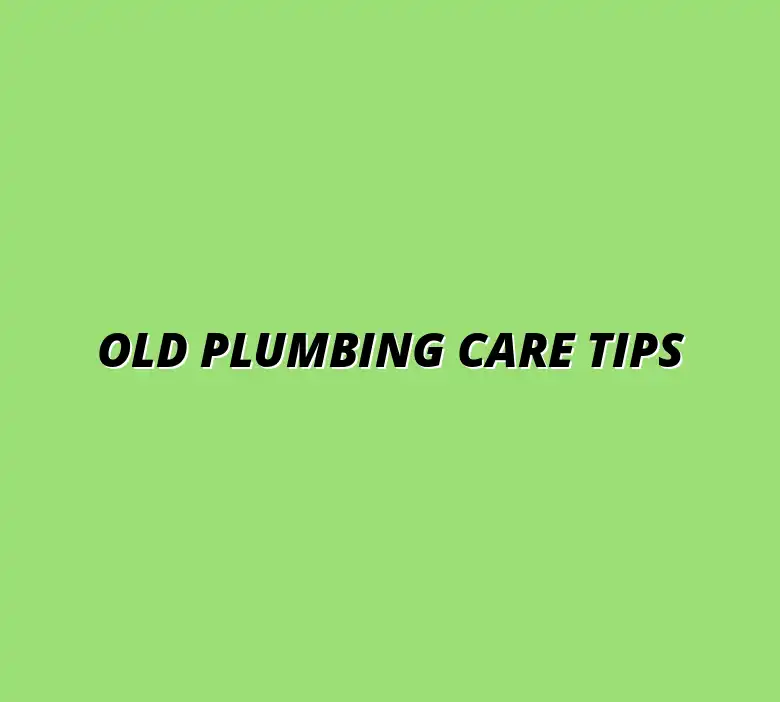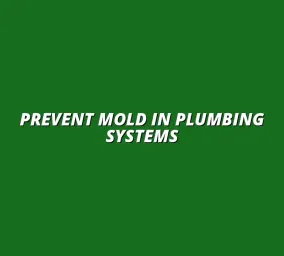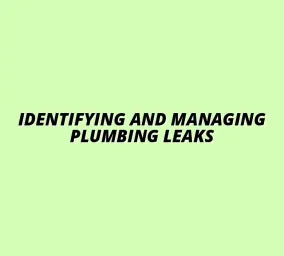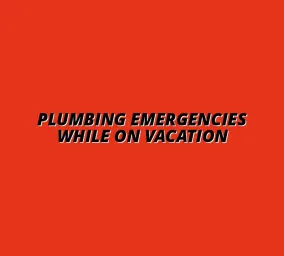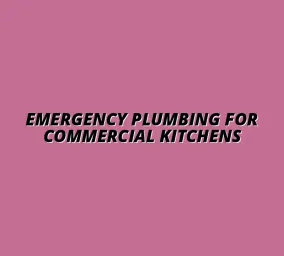Old Plumbing Care Tips
Understanding Old Plumbing Systems and Their Challenges
Old plumbing systems can present a variety of unique challenges that homeowners need to be aware of. These systems often lack the efficiency and reliability of modern plumbing, leading to potential problems like leaks, corroded pipes, and low water pressure. Understanding the characteristics of these aging systems is essential for effective maintenance and repairs.
Many older homes still rely on materials that can degrade over time. These characteristics not only affect the overall performance but also the longevity of the plumbing systems. Being proactive about identifying and addressing these issues can save homeowners both time and money in the long run. For further advice on caring for aging plumbing systems, check out these helpful maintenance tips.
The Characteristics of Aging Plumbing Systems
Aging plumbing systems are often characterized by outdated materials and construction methods. Some common characteristics include:
- Mismatched pipe materials, such as copper, galvanized steel, or lead.
- Outdated fixtures that may not meet current water efficiency standards.
- A lack of modern safety features that prevent leaks and sediment buildup.
Each of these factors can lead to decreased water quality and increased chances of plumbing emergencies. Homeowners should remain vigilant and perform regular checks on their plumbing systems to ensure their functionality. Regular annual plumbing inspections are highly recommended.
Common Materials Used in Old Plumbing
Older plumbing systems often feature a range of materials that have different lifespans and susceptibility to damage. Some of the most common materials include:
- Galvanized Steel: Known for its durability but prone to rust over time.
- Lead: Used in older homes; poses health risks if water is contaminated.
- Copper: A popular choice for its resistance to corrosion but can develop pinhole leaks.
Understanding these materials can help homeowners determine the best maintenance strategies for their plumbing systems. Preventing pipe corrosion is crucial, and you can find helpful tips on how to do so here. It’s crucial to monitor the condition of these pipes regularly.
Signs of Deterioration in Plumbing Systems
Recognizing the signs of deterioration in plumbing systems can help prevent larger issues. Common signs include:
- Frequent leaks or drips from faucets and pipes.
- Unusual water discoloration or odor.
- Low water pressure when using multiple fixtures.
If any of these signs appear, it’s important to investigate immediately. Early detection can lead to more straightforward repairs and mitigate the risk of extensive damage. For year-round maintenance advice, consider these helpful tips on maintaining your plumbing year-round.
Proactive Maintenance Strategies for Old Plumbing
Maintaining old plumbing systems requires a proactive approach to avoid costly repairs and ensure reliable service. By implementing a few key strategies, homeowners can keep their plumbing in top shape. Regular inspections, cleaning, and being aware of potential issues can help prolong the life of plumbing systems.
Not only does regular maintenance enhance the safety and efficiency of plumbing, but it also contributes to better water quality in the home. Here are some effective strategies to consider. Regular maintenance of your water heater is also essential; find useful tips here.
Regular Inspections and What to Look For
Performing regular inspections is one of the best ways to maintain an old plumbing system. During these inspections, homeowners should look for:
- Signs of leaks, such as water stains or damp spots.
- Corrosion or rust on exposed pipes.
- Unusual noises coming from pipes, indicating air bubbles or blockages.
By staying proactive and assessing these areas, homeowners can catch issues before they escalate into significant repairs. Preventing bathroom plumbing corrosion is especially important; find tips here.Regular inspections can save money in the long term.
Identifying Leaks and Water Damage Early
Detecting leaks early can prevent extensive water damage and mold growth. Homeowners should regularly check:
- Under sinks for pooled water or moisture.
- Around toilets and bathtubs for any signs of water seeping.
- Basements and crawl spaces for dampness or musty odors.
Taking quick action on any signs of leaks can make a world of difference. If you notice anything unusual, it’s critical to address it immediately. For plumbing services in Billesley, Birmingham, consider contacting a local plumber.
Assessing Water Pressure and Flow Rates
Keeping an eye on water pressure and flow rates is essential for old plumbing systems. Homeowners should regularly check:
- Water pressure at various fixtures throughout the house.
- Flow rates in sinks, showers, and hose bibs.
- Any sudden changes in pressure, which may indicate problems.
Proper assessments can help detect underlying issues, ensuring that water flows efficiently throughout the home. Consistency in water pressure can also enhance the overall experience when using plumbing fixtures.
Frequently Asked Questions About Maintaining Old Plumbing
Maintaining old plumbing can feel a bit overwhelming, especially with all the potential issues that can arise. It’s common to have many questions, whether you're a homeowner or a tenant living in an older building. Understanding the typical problems, knowing when to seek help, and staying ahead of maintenance can make a real difference!
Let’s dive into some frequently asked questions that can help clarify the best practices for maintaining old plumbing and ensure your system runs smoothly. Knowledge is power, and being informed about your plumbing can save you both time and money in the long run.
What Are the Most Common Problems with Old Plumbing?
Old plumbing systems can face a variety of issues. Here are some of the most common problems you might encounter:
- Leaks: These can occur at joints, fittings, or even within the pipes.
- Corrosion: Older metal pipes may corrode, leading to rust and deterioration.
- Low Water Pressure: This may be due to pipe buildup or leaks.
- Clogs: Years of debris build-up can result in stubborn clogs.
- Water Quality Issues: Older pipes can leach minerals or contaminants into your water supply.
Being aware of these issues can help you keep an eye out for warning signs and take action when necessary. If you notice any of these problems, it might be time to consider preventive measures or repairs.
How Can I Tell If My Plumbing Needs Immediate Attention?
Knowing when to seek help for your plumbing is crucial. There are specific signs you should watch for that indicate your plumbing might need immediate attention:
- Unusual Noises: Hissing, banging, or gurgling sounds can signal a problem.
- Visible Water Damage: Stains on walls or ceilings often indicate leaks.
- Sudden Changes in Water Pressure: If pressure drops unexpectedly, it may indicate a leak or other issue.
- Frequent Clogs: If clogs happen regularly despite preventive measures, it’s a sign of deeper issues.
- Discolored Water: If your water appears brown or rusty, it may be due to corroded pipes.
If you observe any of these signs, it’s wise to consult a plumbing professional. Waiting too long may lead to more significant, costlier repairs!
Creating a Long-Term Plan for Plumbing Maintenance
Having a long-term plan for plumbing maintenance can help you stay ahead of issues and ensure your system remains functional. Establishing a structured routine allows you to manage costs and maintain a comfortable living environment.
It's essential to develop a proactive approach that includes regular inspections and maintenance tasks. This can not only extend the life of your plumbing but also save you stress and money in the long run!
Establishing a Plumbing Maintenance Schedule
A maintenance schedule is a great way to keep your plumbing in check. Here are some key tasks to include in your routine:
- Monthly Inspections: Check for leaks and water damage.
- Drain Cleaning: Clear out drains regularly to prevent clogs.
- Water Quality Testing: Test your water quality at least twice a year.
- Pressure Checks: Assess water pressure quarterly.
- Professional Inspections: Schedule a plumber for a thorough check-up every few years.
Setting these tasks in your calendar can make it easier to stay on top of them, ensuring your plumbing remains in good shape.
Setting Reminders for Routine Checks
Creating reminders for your plumbing maintenance tasks can help you stay organized and proactive. Here are a couple of ideas:
- Digital Calendar Alerts: Use your phone or computer calendar to set reminders.
- Checklists: Keep a printable checklist on your fridge or in a handy spot.
These tools can help you remember when to perform your plumbing checks, allowing you to catch potential issues before they become serious problems!
Budgeting for Plumbing Repairs and Upgrades
Budgeting for plumbing repairs is crucial, especially in older homes. Understanding costs can help you prepare for unexpected repairs. Here are some factors to consider:
- Regular Maintenance Costs: Set aside funds for routine inspections and minor repairs.
- Emergency Repairs: Have a separate fund for unexpected plumbing emergencies.
- Upgrades on Aging Systems: Budget for potential replacements of old pipes or fixtures.
Having a well-planned budget can give you peace of mind and ensure you're prepared for any plumbing surprises!
Evaluating When to Upgrade Plumbing Fixtures
Deciding when to upgrade plumbing fixtures can be tricky, but certain situations call for it:
- Frequent Repairs: If you’re constantly fixing an old fixture, consider replacing it.
- Low Efficiency: Outdated fixtures may waste water and increase bills.
- Goals for Home Value: Upgrading can enhance your home’s overall value.
Keeping an eye on these factors can help you decide the best time for upgrades, ensuring efficiency and functionality in your home.
Final Thoughts on Preventative Plumbing for Aging Homes
Regular maintenance is essential for keeping old plumbing systems functional. By understanding the common issues and symptoms, you can take action when needed. It’s all about being proactive!
Staying informed and prepared can make a world of difference in maintaining your plumbing. The more you know, the better equipped you are to handle any plumbing challenges that come your way!

